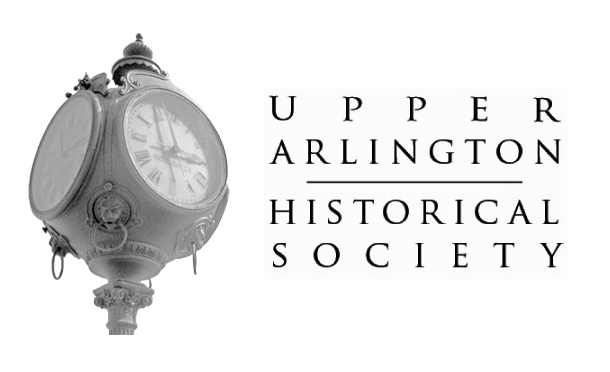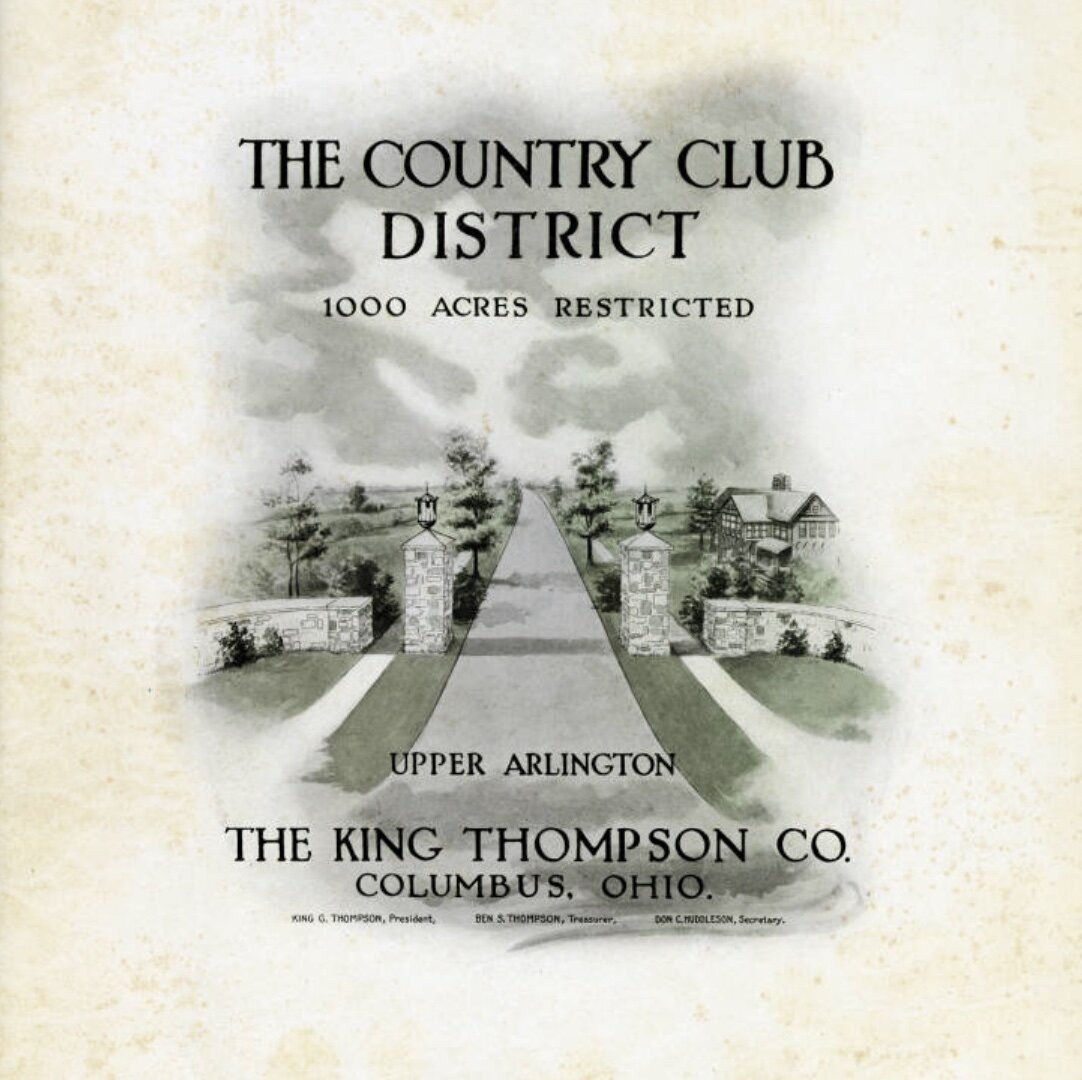Section 1.2.
J.C. Nichols: Kansas City’s Influence on Upper Arlington
Along with several other developers across the United States in the early 1900s, King and Ben Thompson were greatly influenced by J.C. Nichols, most notably the developer of the Country Club District in Kansas City.
Who was J.c. nichols?
J.C. Nichols was an influential voice in residential real estate development from the 1920s and until his death in 1950. His ideas – specifically the use of deed restrictions and homeowners’ associations - found their way into hundreds and possibly thousands of subdivisions across the United States, according to biographer William S. Worley:
“The Kansas City developer did not initiate the first planned residential community in the United States. That achievement occurred at least as early as the 1850s, when Llewellyn Park, New Jersey, was planned. Obviously, Nichols was not the first real estate subdivider to build houses for sale on his lots, even in Kansas City. He was not even the first developer to have legal protection (called “deed restrictions”) drawn up or to have homeowners’ associations or shopping centers. Nichols was, however, one of the very first United States land developers to do all of these things on one site using large-scale operations to achieve economies of scale.”(1)
Nichols was one of the first developers to hire landscape architects to design his subdivisions, an added expense which he felt made them most exclusive and consequently, more profitable. In addition, “Nichols crossbred the professions of real estate broker and land subdivider, which put him in contact with both the world of real estate and finance as well as landscape architects and their alliances with (and development into) planners.“(2)
what evidence is known of his national recognition?
“From all of this, it would seem probably that Nichols has been the most published, and the most honored, land subdivider in American history. His acceptance on a national level may have been even greater than in his own scene of Kansas City.” - William S. Worley(3)
Nichols’ national leadership roles included:
National Conference on City Planning (NCCP)
In 1914 he was selected as a member of NAREB’s (National Association of Real Estate Brokers) City Planning Committee
The Urban Land Institute in 1944 formed its first council, the Community Builders’ Council, organized by J.C. Nichols
In 1946 NAREB recognized Nichols as the “Dean of American Community Planners and Builders,” awarded “for his leadership in the thoughtful planning of American cities” and “for the great pattern he has created in the development of a liveable community.”(4)
After Nichols’ death in 1950 the Urban Land Institute created a foundation in his honor that awards a $100,000 prize.
what is known about king thompson’s connections to j.c. nichols?
Edward Howard, a founding resident of Upper Arlington, its first Village Clerk and contemporary of King Thompson, authored a 1963 article recalling the following:
“In the latter part of 1913…(King Thompson) had recently visited the County Club development at Kansas City, and had returned with a vision of something like it on his own behalf.”(5)
In 1914 King Thompson was also selected as a member of NAREB’s (National Association of Real Estate Brokers) City Planning Committee, alongside Nichols and E.H. Bouton of Roland Park; Paul Harsch of Toledo; Robert Jemison, Jr. of Birmingham, Alabama; Duncan McDuffie of Berkeley, California; and Lee J. Ninde of Indianapolis. In 1921 this NARAB committee decided to meet annually to share ideas, naming their organization the Developers of High Class Residential Property.
Note the similarities of this image from: (a) page 1 of Thompson’s 1914 marketing brochure, and (b) this sign from Kansas City development of J.C. Nichols (link to The State Historical Society of Missouri).
How impactful was j.c. nichols’ use of restrictive covenants in property deeds?
“Deed restrictions had a long history before the Kansas City developer began to put them into practice. Mandatory homeowner associations were not entirely new when he began the Mission Hills Homes Company in 1913. However, the degree to which (Nichols) used both mechanisms to maintain direct and indirect control over the quality of development in his areas was unprecedented.” - William S. Worley(6)
Many sources are available documenting Nichols’ racially restrictive covenants, such as:
From the Urban Land Institute website in an article about Nichols and his vision of the suburban world:
’…for J.C. Nichols’s own firm, at least through 1949, “his property deeds always warned buyers that ‘none of the lots hereby restricted may be conveyed to, used, owned, nor occupied by negroes. . . .”’From The Color of Law by Richard Rothstein, p. 79:
”Nichols required each purchaser to join the district’s association. Not only did its rules prohibit sales or rentals to black families, but this racial exclusion policy could not be modified without the assent of owners of a majority of the developments’ acreage. Nichol’s developments were a racial model for the rest of Kansas City, which was soon covered by such agreements.”
As the Kansas City Public Library notes, “J.C. Nichols occupies a complicated place in Kansas City’s history.” The Urban Land Institute recently renamed their $100,000 J.C. Nichols prize to the ULI Prize for Visionaries in Urban Development in an “effort to address and assist in remedying the legacy of social and economic harm caused by some real estate practices.”(7) In 2020, the Kansas City Board of Parks and Recreation voted to remove J.C. Nichols name from their iconic fountain.
References:
(1) Worley, William S. J.C. Nichols and the Shaping of Kansas City (University of Missouri Press, 1993), p. 6-7.
(2) Stevens, Sara. Developing Expertise: Architecture and Real Estate in Metropolitan America (Princeton University, 2016), p.32.
(3) Worley, William S. J.C. Nichols and the Shaping of Kansas City (University of Missouri Press, 1993), p. 303.
(4) Stevens, Sara. Developing Expertise: Architecture and Real Estate in Metropolitan America (Princeton University, 2016), p.60-61.
(5) Howard, Edward, “The Birth of a City,”Upper Arlington News, December 12, 1963, p. unknown from copy.
(6) Worley, William S. J.C. Nichols and the Shaping of Kansas City (University of Missouri Press, 1993).
(7) Arnold, Justin. “ULI to Rename J.C. Nichols Prize for Visionaries in Urban Development,” Urbanland, July 13, 2020. Accessed May 17, 2021. https://urbanland.uli.org/inside-uli/uli-to-rename-j-c-nichols-prize-for-visionaries-in-urban-development/

